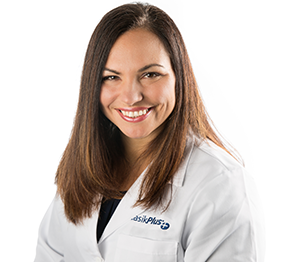-
Summer Savings: Save $1,000 On LASIK , Find More
*Must mention this promotion and be treated in May of 2024 to qualify. $1,000 off for both eyes on standard Wavelight price, $500 off for one eye. Cannot be combined with any other offers.
How Soon Can I Travel After LASIK?
Recovery from LASIK is generally quick. However, candidates often have questions regarding how soon they can resume travel activities. Have you wondered what you need to consider before planning to drive or to fly?
Driving After LASIK
Patients cannot drive themselves home following LASIK. Doctors may prescribe a mild sedative, such as Valium, to be taken before the surgery to help patients stay calm and relaxed. The drug takes several hours to wear off, and patients’ perceptions and reactions will be impaired during that time. Additionally, patients’ eyesight will be blurry because of lubricating eyedrops applied immediately after the procedure. Due to both of these factors, it’s important that patients arrange for someone to drive them home following the procedure.
After LASIK, it is common for patients to experience dry eye symptoms during the healing and recovery process. The Department of Ophthalmology at the University of Mississippi Medical Center reports that the eye is more vulnerable to drying environments in the six months following LASIK surgery. Dry eyes can make vision inconsistent during the early healing process. Patients can use eyedrops to provide extra moisture. Some patients, particularly those in dry climates and air-conditioned environments, may opt to apply drops every few hours for a week or two after surgery.
The majority of patients experience a significant improvement in their vision, to approximately 20/40 or better, within the first 24 hours following their surgery. Vision then continues to gradually improve over the next several weeks. A postoperative checkup is typically scheduled the day after LASIK. Most patients feel comfortable enough with their vision to drive to their appointment.
Some patients experience more sensitivity to light than usual and opt to delay driving an extra day or two. Patients can also wear sunglasses to minimize exposure to strong sunlight, especially the week following their surgery.
Flying After LASIK
Most LASIK patients are cleared to fly during their next-day follow-up appointment. This is good news for patients who traveled out of town for their surgery, as well as those who travel frequently for work or pleasure.
The eye is not affected by altitude pressurization in an airplane cabin any differently after laser eye surgery. However, because airplane cabins are pressurized with low humidity, eyes can be more prone to drying out during flight. Therefore, when traveling on an airplane, use lubricating drops more frequently to combat the dryness caused by air conditioning.
Additionally, if you experience dry eyes while on an airplane, you may want to close your eyes during the flight and limit engaging in activities that involve staring, such as working on a computer or reading. It is important to avoid rubbing your eyes or getting dust in your eyes. Good hydration is always important, and you will want to plan to drink extra water when flying.
Patients should be careful to avoid trauma to the eye after undergoing LASIK. In fact, doctors recommend avoiding strenuous contact sports for one month and swimming pools and hot tubs for two months after vision correction. If you are traveling to a vacation destination that involves high levels of athletic activity or swimming, plan the timing of your surgery and vacation accordingly. Sports eye protection is always a good idea, and you should always wear sunglasses outside when skies are sunny or bright-overcast — regardless of the season.
Traveling for Work
Most patients return to work within one or two days following their LASIK surgery. For the first few days, you may want to plan to take short breaks to rest your eyes. If your profession makes scheduling breaks more challenging, such as truck drivers, firefighters and pilots, talk with your doctor about when to return to work. Pilots, for example, may not be able to plan to take breaks because of the need to rely on visual cues. In fact, vision supplies pilots with approximately 80 percent of all flight information, including airborne traffic, hazards and printed materials, such as flight documents and cockpit instruments.
Aside from some scheduling considerations, LASIK should have little impact on travel plans. Following the procedure, patients are able to resume their normal activities in a relatively short amount of time while also more fully enjoying an active lifestyle.
YOU MIGHT ALSO LIKE...
VISION CENTERS NEAR ME
Enter your zip code, city, or a doctor name below to find a vision center.
Find out if LASIK is right for you
Congratulations!
Your vision issues can most likely be corrected with a LASIK procedure. Schedule a free consultation today.
Answer 5 simple questions to see if you are a candidate
What is your age group?
Do you wear...
With corrective lenses, do you have...
Have you ever been told that you have astigmatism?
Have you ever been told that you have dry eyes?
Request an Information Kit
Learn about your surgeon, the latest advanced technology, procedures, options and benefits, financing options, and what to expect from your LASIKPlus experience.









